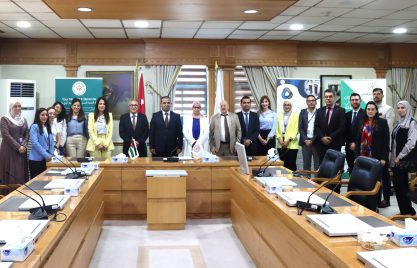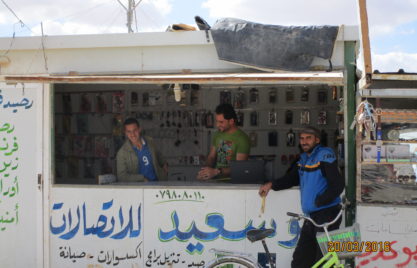Main Jordanian stakeholders of Microfinance sector reform look back on a successful first year and ahead to new challenges.
According to a simple count using experience data and ratios, close to 400,000 jobs in Jordan are affected directly or indirectly by microfinance, explains Thomas Rahn, team leader of the EU co-financed MFMR component in Jordan during the first annual meeting of the main Jordanian stakeholders of microfinance sector reform. Accordingly, keeping this sector running and growing, strengthening it and ensuring outreach and client orientation, means a direct effect for the wellbeing of thousands of Jordanians from all corners of the Kingdom. A big appreciation is therefore to be expressed to all the institutions and individuals that support the major microfinance sector reform in Jordan, as Thomas points out.
Following an eventful first year of actively promoting financial inclusion in Jordan as part of a partnership with the European Union, the MFMR programme invited all partners to zoom out from the usual working environment and look back to the past, successful 12 months and focus on the missions for 2016. On the 21st of February at the Grand Millennium Hotel, executives from partnering institutions EU, MoPIC, CBJ, DEF and Tanmeyah followed the invitation and jointly shed light on the achievements in a half day workshop.
In consideration of the workshop’s title “Celebrating a Year of Achievements” the agenda was predominantly oriented towards the accomplishments of 2015. Tarja El-Idrissi from the EU Delegation opened the day, recapitulating the structure of the microfinance sector reform project and visualising the pillars to give all participants the “big picture” of the progress. Representatives from the MoPIC (Emad Shanaah), CBJ (Amr Ahmad & Nour Al-Momani), DEF (Ghada Alfayez), and Tanmeyah (Saleem Nammari) followed her example and gave the participants an insight to the achievements of the past year.
A documentation of the PR channels by GIZ showed that activities and results of the project are visible for decision makers and experts around the world. In the realm of public relations, the presented short movie about last year’s conference on financial inclusion and employment in the Arab region surely accounts for one of the most visible PR outputs of the past 12 months.
The day also showed that there is still enough work ahead. Ambitious but yet reachable planned activities for 2016 were presented which aim to reach the relevant indicators determined earlier. A plenary discussion on the future plans gave all stakeholders the chance to express their questions and ideas for a successful continuation of the efforts made in the past.
By Robin Schimmelpfennig



